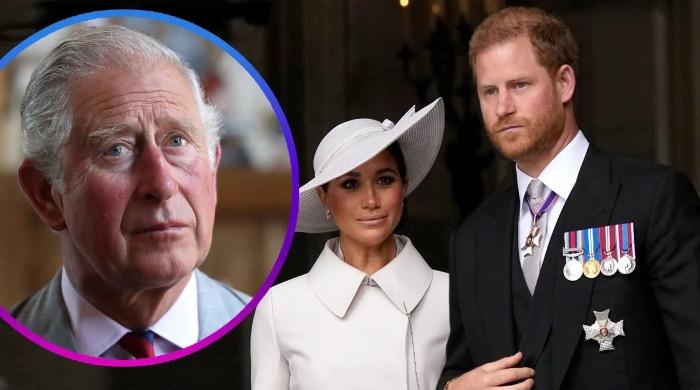
Uncategorized
The dramatic transformation of India’s oil trade with Russia, in seven charts
By Sumaiya | Published | No Comments
For more than a year, India — the world’s third largest consumer of crude with an import dependency of more than 85% — has been in love with Russian oil. The affair began soon after the February 2022 invasion of Ukraine, after Russia started to offer deep discounts to willing buyers, as Western countries began shunning its oil.
Before the war, Russia was a marginal player in India’s oil trade, which was dominated by West Asian suppliers like Iraq, Saudi Arabia, and the United Arab Emirates (UAE). In a little more than a year, the discounts ensured that Russia became the biggest source of crude for India.
The Russian discounts seem to have been eroded considerably in recent weeks. The rise in the price of key Russian grade Urals might create payment problems for Indian refiners — and test the strength of the energy trade relationship.
 Indian refiners saved at least .17 billion in foreign exchange in the 14 months that ended May 2023 by ramping up purchases of discounted Russian crude oil following the outbreak of the war in Ukraine. (Wikimedia Commons/Representational)
Indian refiners saved at least .17 billion in foreign exchange in the 14 months that ended May 2023 by ramping up purchases of discounted Russian crude oil following the outbreak of the war in Ukraine. (Wikimedia Commons/Representational)Even so, this is the story of the biggest shift in India’s oil trade in recent history.
CHART 1: Growth in Russian oil imports

Data from the Directorate General of Commercial Intelligence and Statistics (DGCI&S) show India’s oil imports from Russia have grown more than 10 times since April 2022. The DGCI&S releases trade data with a lag, and data until May are so far available.
The growth has been steady especially since December 2022, after the G7 imposed a $60-per-barrel price cap on seaborne Russian crude early that month.
CHART 2: Russia gained, others lost out

A comparison between market shares (by volume) of India’s top 10 crude oil suppliers in the 14 months ended April 2023 and their shares in FY2021-22 shows how Russia has gained at the expense of other suppliers.
Russia’s market share surged to 24.2% in the 14-month period, up from a measly 2% in FY22. Most of the other major suppliers saw their market shares fall. Iraq, Nigeria, and the US saw the most notable declines. (See the difference in the sizes of the two bars for each of these countries.)
CHART 3: Russia rose high as OPEC fell

The cumulative market share of members of the Organization of the Petroleum Exporting Countries (OPEC), the major oil producers’ group that dominated India’s oil import basket, declined dramatically as India’s Russian oil imports graph rose sharply.
OPEC’s share in India’s oil imports fell by almost half — from 75.3% in May 2022 to 40.3% in May 2023. Among the major suppliers to India, Iraq, Saudi Arabia, the UAE, Kuwait, Nigeria, and Angola are members of the OPEC cartel.
During the April 2022-May 2023 period, Russia’s share in India’s oil imports zoomed from 6% to 40.4% — and, according to various analysts and industry watchers, appear to have peaked.
CHART 4: Mystery of the actual discount

While Indian refiners have been buying cheap from Russia, the actual discounts on the oil remain shrouded in mystery, thanks to the opaque pricing of Russian oil cargoes. Indian refiners buy on a ‘delivered’ basis, which means that the price of the cargoes includes the cost of freight and insurance, apart from the cost of the oil itself.
The best available marker for discounts is a comparison between the average landed price of Russian crude and the average price of oil imported from all other suppliers. Western sanctions are said to have raised freight and insurance costs for Russian oil considerably. This suggests that discounts may be higher on the price of oil, and lower on the landed price (including freight and insurance costs).
CHART 5: Discount levels are up & down
Analysis of the trade data shows that the discoun

t levels of Russian oil shot up initially (in May 2022) and contracted substantially in June, before rising again and stabilising for the next four months. Two months of contraction until December 2022 followed.
Then came the G7 price cap, and discount levels rose over the next four months, before falling again. According to industry sources, discounts have eroded considerably over the past few weeks, and Russia’s flagship crude has breached the G7 price cap. If this situation persists, oil from Russia may become a lot less attractive for Indian refiners in the coming months.
CHART 6: Russian share in India oil bill

Trade data suggest Indian refiners saved at least $7.17 billion in foreign exchange in the 14 months ended May 2023 by ramping up buying of discounted Russian oil. India’s oil imports from April 2022 to May 2023 was $186.45 billion; had Indian refiners paid for Russian oil the average price they paid for crude from all other suppliers put together, the oil import bill would have been $193.62 billion.
India’s Russian oil imports were nearly $40 billion in the 14-month period. In April 2022, the Russian bill stood at $866.40 million. In May 2023, it had shot up to $4.59 billion.
CHART 7: Russia vs Arab world and US

The differential in price of Russian crude vis-à-vis other top suppliers shows Russian oil was delivered to India at a significant discount to oil from Saudi Arabia and UAE for most months.
The discount to Iraqi oil, on the other hand, was the lowest in most months. In fact, the average landed price of Iraqi oil was lower than that of Russian oil in a couple of months, which suggests that Iraq tried to compete with discounted Russian barrels by giving concessions. Amid the recent contraction in Russian discounts, Indian public sector refiners are in talks with Iraq for more purchases on friendlier payment terms.
The landed price of US crude too was lower than that of Russian oil for a couple of months, although the differential to Russian oil was not consistently low in other months during the period.
Source for Charts: Analysis based on data from the Directorate General of Commercial Intelligence and Statistics (DGCI&S)
Follow Us on Google News





